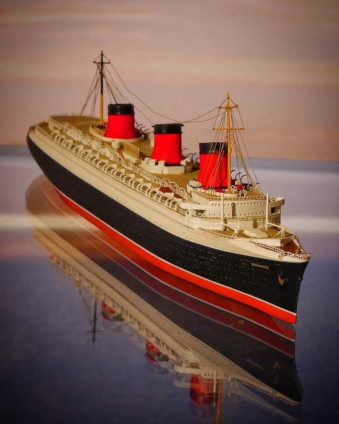In Part 1, we stated that if the charterer goes beyond the laytime it is a breach of the charter party and the party in breach shall be liable to pay damages for such a breach. This liquidated damage is what is known as demurrage.
It is important to know when laytime starts to run, and that there are three key requirements needed to be met: the ship has arrived at the port, a notice of readiness has been given in accordance with the charter party agreement and the ship is in fact ready.
“Arrived ship”
First, is the ship an arrived ship? To answer this question as to when the ship is an “arrived ship” it will be crucial to see where the charter party states that the ship has to proceed to.
There are various terms that are usually drafted into an agreement, such as “to one safe port” or “one safe berth” or “sea mooring buoy”. Extra care must be taken if the agreement is to “a port”.
The area of that port may be very large and on arrival, the ship may need to anchor as it waits for a free berth, if there is congestion at the port. It is important to note that even if a ship is at the anchorage a particular distance from her berth, the ship may still be considered an “arrived ship” if that ship is within the port limits.
There is a rebuttable presumption that once in the port limits, the ship is at the disposal of the charterer when she is “at the usual waiting place in the port”. For a charterer, it is, therefore, appropriate to ensure that the agreement is that laytime will start counting once the ship is in her berth at the port.
“Notice of readiness (NOR)”
Notice of readiness has to be given in accordance with the agreement. The charterer has to know that the ship has arrived and therefore to make arrangements to either load or discharge the ship promptly.
One of the requirements that are also expected from the shipowner through his ship captain or agent is the expected time of arrival prior to its arrival, to permit the charterer to make necessary arrangements.
The charterer would also want the ship to arrive within the laytime. Usually, the agreement is that laytime shall not commence before the commencement date unless the charterer expressly agrees. If the ship arrives earlier, the shipowner may negotiate for the laytime to begin earlier, if the berth is available.
“Readiness”
The third requirement is that “the ship is in fact ready”. The NOR must contain true and accurate statements that the ship has arrived and is ready at the time the notice was given. 2
Should the statement of NOR be inaccurate, this will mean the notice is not valid, unless the charterer or his agent waives the requirement for the NOR.
It is therefore beholding on the shipowner and his captain that the NOR is given in good faith. It is worth noting that there may be occasions when the ship does give NOR in the belief that it is ready, however, it then goes through several processes that do not actually make her ready.
Such a scenario maybe, if the NOR is given, however, it has not cleared customs or received free pratique (health and medical clearance).
A situation such as this gives the necessity to agree expressly whether or not that laytime will count, even if it is subsequently found that the ship was not ready.
It is important that shippers, importers and traders in Ghana have a clear understanding of some of the key requirements that trigger the commencement of laytime. If there is an opportunity, it should be negotiated to ensure that all parties are clear with respect to their contractual obligations with a specific shipping line or charterer.
The author, Kwabena Asare Esq. is a Managing Partner at Asare Barimah & Associates. He is also a Maritime Barrister and Oil & Gas specialist.
Latest Stories
-
GOC Elective Congress: GFA Gen Sec misses out on GOC Board
34 seconds -
CJ removal saga: Akufo-Addo set a bad precendent with Charlotte Osei – Prof. Agyeman-Duah
1 hour -
I do not agree threshold for a prima facie case against the CJ is low – Barker-Vormawor
1 hour -
Gold Board operations will increase Ghana’s reserve- BoG Governor
1 hour -
There must be serious introspection on petitions to remove the Chief Justice- Prof Agyeman-Duah
1 hour -
Ghana Chief Justice Suspension: Nation Grapples with Separation of Powers
1 hour -
WHO, AMMREN and GHS urge media to champion immunisation during African vaccination week
2 hours -
CJ’s suspension: Why aren’t other judges facing removal? – Ex Deputy A.G. fumes
2 hours -
CJ’s Suspension: Prima facie establishment has no basis – Ex Deputy A.G
3 hours -
ASFC 2025: Ghana U-15 girls promise to ‘kill themselves’ in final against Uganda
3 hours -
Pope Francis: Mourners reminded of his call to ‘build bridges not walls’
3 hours -
Telecel’s short notice to increase broadband price unfair – CUTS International
3 hours -
ASFC 2025: CAF concludes Young Reporters Workshop in Accra
3 hours -
IMF projects 4% growth rate for Ghana in 2025
4 hours -
Livestream: Newsfile discusses suspension of CJ and galamsey
4 hours

